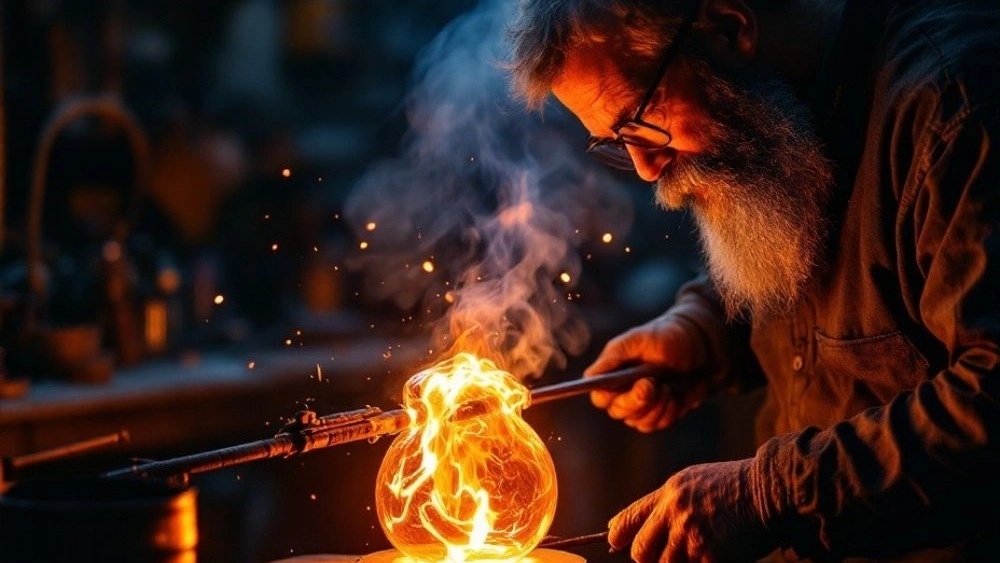Abstract
Glassing is one of the oldest human handicrafts whose background dates back to more than 4,000 BC. Iran, as one of the major civilization centers, has played a prominent role in the development of this art. This article explores the history of glassware in Iran, various methods of glass production, and in particular direct heat glass technique.
Introduction
Glassism has long been developed in ancient civilizations such as Egypt, Mesopotamia and Iran. Evidence shows that the first glass objects in Iran belong to the second millennium BC. The Iranian glass industry reached its peak in various periods, especially in the Sassanid and Islamic era.
Glassism in Iran: From ancient to contemporary
1. Pre -Islam
In the second millennium BC, the glass was mostly used as beads, small containers and architectural decorations. The works discovered in the Silk and Susa hills show Iranian skills in the manufacture of colored and transparent glass. During the Achaemenid period (1-5 BC), the glass was produced as a luxurious commodity and exported to other areas. But the main flourishing of the glass industry in Iran occurred during the Parthian and Sassanid era.

2. Islamic era
With the arrival of Islam, the art of glass -making in Iran made further progress. Cities such as Ray, Neyshabur and Jorjan have become important glass production centers. During this period, various techniques such as mold glass, blower glass, and glass -glass were developed with direct heat.
1. Contemporary era
During the Qajar and Pahlavi era, the Iranian glass industry changed with the introduction of new technologies. However, traditional workshops in cities such as Isfahan, Qom and Tehran are still producing handheld glass.
Direct heat
Define
Glassy with direct heat is a method in which the artist exposes the glass directly to the heat without the use of industrial molds and forms it with manual tools. This technique includes the following steps:

Melting of the glass: Raw glass or recycled crumbs melt in a furnace at a temperature of 1 to 2 degrees Celsius. Forming: The artist creates different forms by using blowing, metal tools, and direct heat. Gradual cooling: To prevent cracking, glass parts are slowly cooled.
Features and applications
make sophisticated and delicate shapes
Suitable for producing art utensils, decorative lights and glass sculptures
Ability to combine different colors in the production process
Conclusion
Glassism in Iran, despite technological changes, remains one of the most important handicrafts. Direct heat glass, due to its high flexibility and the possibility of creating unique artwork, has a special place among glass arts.
Resources
Burkehart, Lucy. Glass History in Iran, University of Tehran Publications, 1. Godard, Andrea. Ancient Iranian Art, Translated by Parviz Nathal Khanleri, 1. Articles published in Iranian Traditional Arts Journal.

